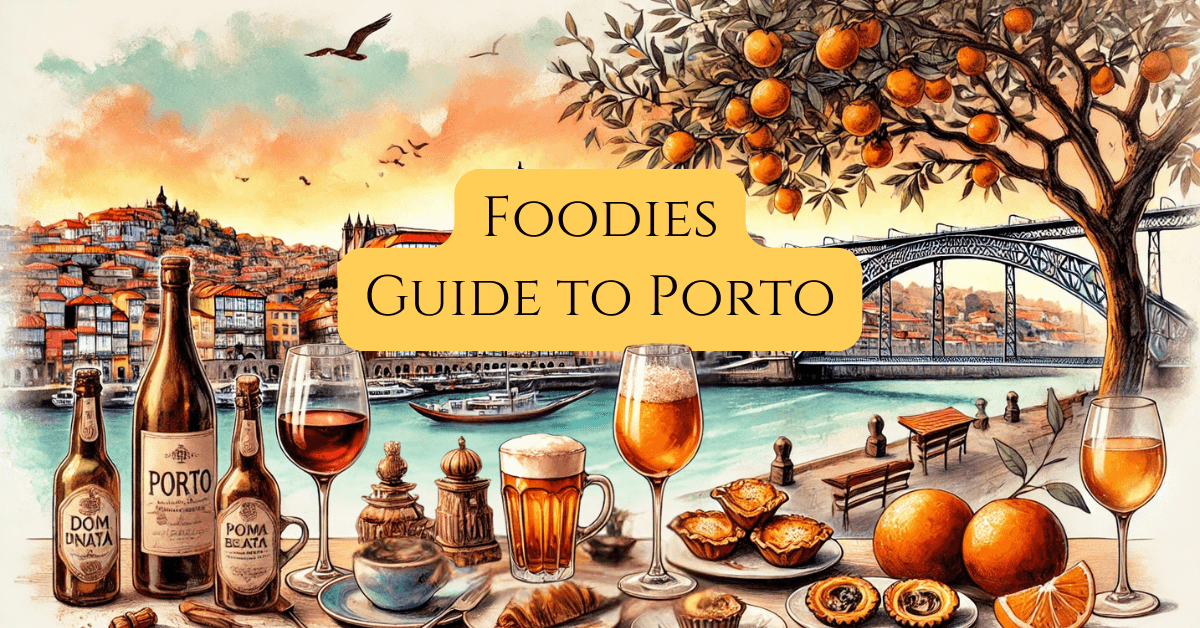Porto is one of those cities that pulls you back in. Maybe it’s the warmth—not just of the sun, but of the people. Maybe it’s the food, cheap and honest. Or maybe it’s the wine, which, on this trip, I realised just how little I knew about. Either way, this wasn’t our first trip, and it certainly won’t be our last. On my return to Paris, I wanted to write something for my friends looking for a foodie guide to porto that gives real insights into what it’s like traveling there with demanding parisiennes.
As a chef and food tour guide living in Paris, I don’t claim to be an expert on Porto, but I do know good food when I taste it. This was my second visit, and while I was balancing family-friendly needs, I also took the chance to deepen my understanding of the city’s food and wine scene. Traveling with my vegetarian, tea-total mother in law and 6 year old daughter was a challenge. My wife and I spent a lot of time preparing our trip to ensure everyone had a great time without getting ripped off in tourist traps or missing out on the must eats.
So after our second trip to Porto, how does Porto hold up as a gastronomic destination when you’re traveling with a vegetarian mother-in-law and a six-year-old? And is it evolving into something greater, or simply succumbing to gentrification? Let’s dive in.
Table of Contents
Why Porto?
Paris in February is miserable. The kind of gray that seeps into your bones and makes even the thought of a baguette feel uninspired. So, when the mother-in-law’s 70th rolled around, we decided Porto was the perfect antidote—a sun-drenched escape filled with bold flavors, cheap wine, and that rugged, unfussy charm that makes a chef like me feel at home.
We first visited in January 2022 and instantly fell for the city’s effortless appeal. The warm terracotta rooftops, vibrant azulejo tiles, and a hospitality that reminds you that good service isn’t about bowing and scraping, but about genuine warmth. This time around, it didn’t disappoint.
By midday, we were eating on sunlit terraces, basking in 17-degree glory while sipping crisp vinho verde. The food? Still deliciously simple, still cheap, and still best enjoyed with an unhurried attitude. Porto is getting more touristy, sure, but it hasn’t lost its soul just yet. If you’re after an authentic experience, go now—before the shine of gentrification dulls the rough edges that make it so special.
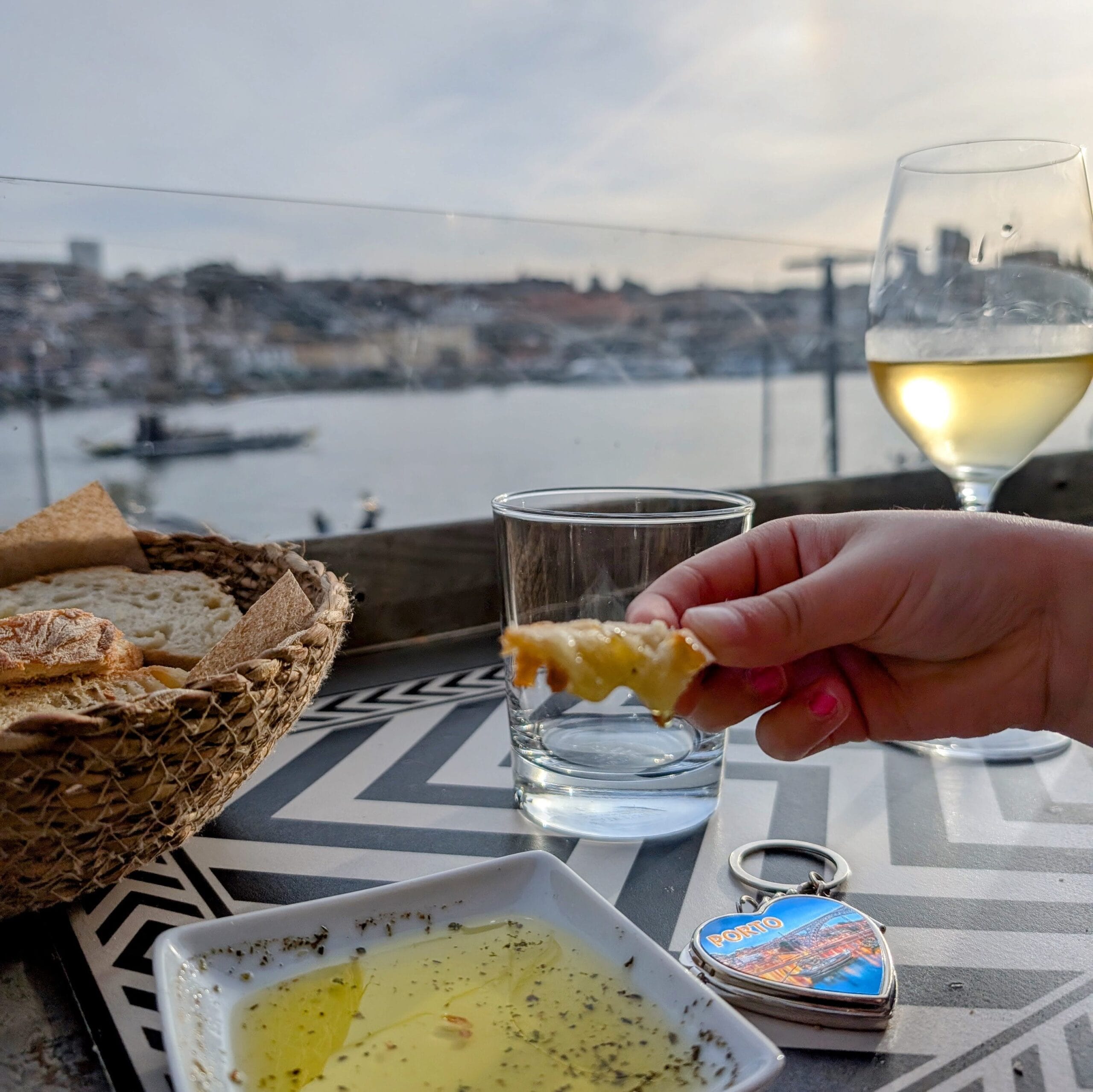
Porto’s Terroir: Simplicity and Bounty
If you truly want to understand how a place eats, you need to understand its terroir. While terroir is often talked about in the wine world, it’s just as crucial when it comes to food. Eating locally and sustainably isn’t just about following trends—it’s about respecting what the land, sea, and people naturally provide.
Porto’s terroir is one of extremes. The Atlantic batters its coastline with cold waves and damp winters, followed by dry, punishing summers. The steep Douro Valley, though brutal to cultivate, produces wines with astonishing depth. The region’s vegetables, nurtured in Portugal’s mild winters, burst with flavor in ways that supermarket imports simply can’t replicate. The fish? It’s everywhere, hauled in daily by local fishermen whose knowledge of the sea is passed down through generations. And let’s not forget the people—chefs, farmers, and artisans who shape Porto’s food culture with their deep-rooted traditions and ingenuity.
This is a place where you don’t need to manipulate ingredients to make them sing. Portuguese cuisine is about honesty, simplicity, and letting both nature and human craftsmanship do the heavy lifting. It’s the very essence of what is terroir—a philosophy that every true foodie should embrace when traveling.
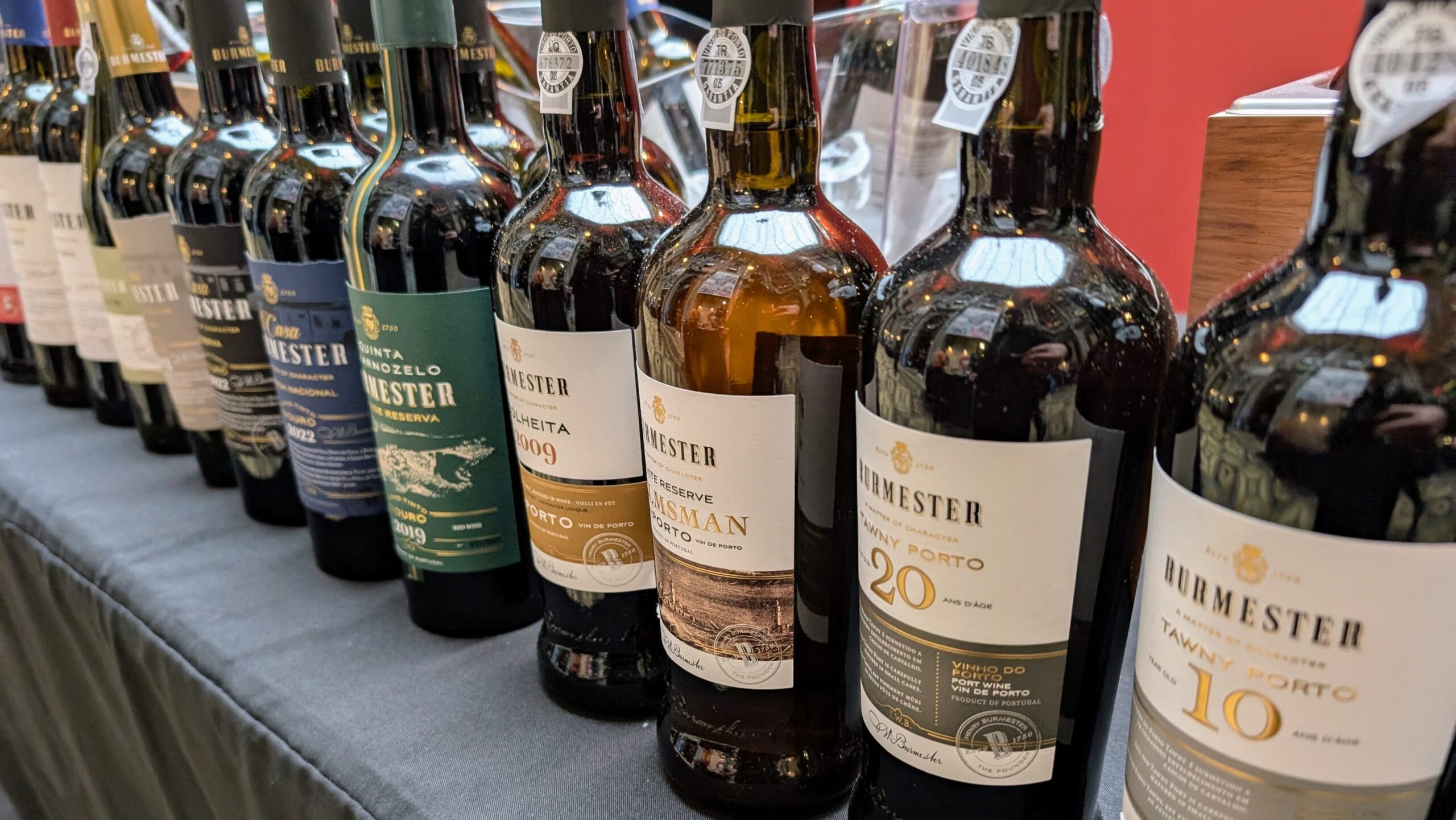
Porto’s Wine Scene: A Revelation (Again)
On my first visit to Porto I fell in love with Port, a drink often unfairly dismissed as old-fashioned, is so much more than just a dusty bottle at the back of your grandparents’ drinks cabinet. As a chef living in Paris, I often find myself stuck in the gravitational pull of France’s wine dominance. But stepping outside that bubble reminds me just how vast and exciting the global wine scene truly is.
This time, I carved out a few hours alone to attend the Essência do Vinho Festival, Porto’s premier wine event, held in the grand setting of the Stock Exchange Palace—a breathtaking venue that added an extra layer of prestige to the experience. With over 400 producers and 400 wines to taste, and an entry fee of just 25 euros, it was an absolute steal.
Walking into the festival was like stepping into an oenophile’s paradise. The sheer variety of wines available was staggering. It was a rare and intimate opportunity to meet the winemakers themselves—many of whom barely spoke a word of French or English but whose passion for their craft was unmistakable. There was far too much wine to cover in a single day, but I took it as a challenge, tasting over 160 wines and leaving with a newfound respect for Portugal’s wine industry.
Some standout moments:
- Tojeira’s Albariño & Pet Nat — Tojeira’s stunningly fresh and vibrant Vinho Verde was a treat but the suprise was their Pet Nat, one of the few Pet Nat’s I found on the show with green apple notes perfect for an aperitif in the sun.
- Julia Kemper’s sparkling Dão DOC Brut Nature — The perfect picnic bubbles, with a crispness that lingered beautifully. I really enjoyed learning about this wine producer making all organic all natural wines.
- Sogevinus Group’s Generous Tasting Experience — On my first visit to Porto, I discovered my love for Burmester’s 10-Year Tawny, a bottle I now order by the case. This time, I got to explore a full vertical tasting of their latest reds and even sip on some hidden gems.
- Boa-Vista Douro Reserva 2020 — A bold, knockout wine that took me by surprise.
- 1978 vintage Kopke Port — A truly special bottle, only offered to serious fans of the Sogevinus house, that sent goosebumps down to my toes.
Port wine gets an undeserved bad rap, but whether it’s a crisp white or rosé Port before a meal or a deep, complex Tawny paired with cheese, it deserves its rightful place in the modern drinking repertoire. If you want to rediscover Port in all its glory, Porto is where you need to be.
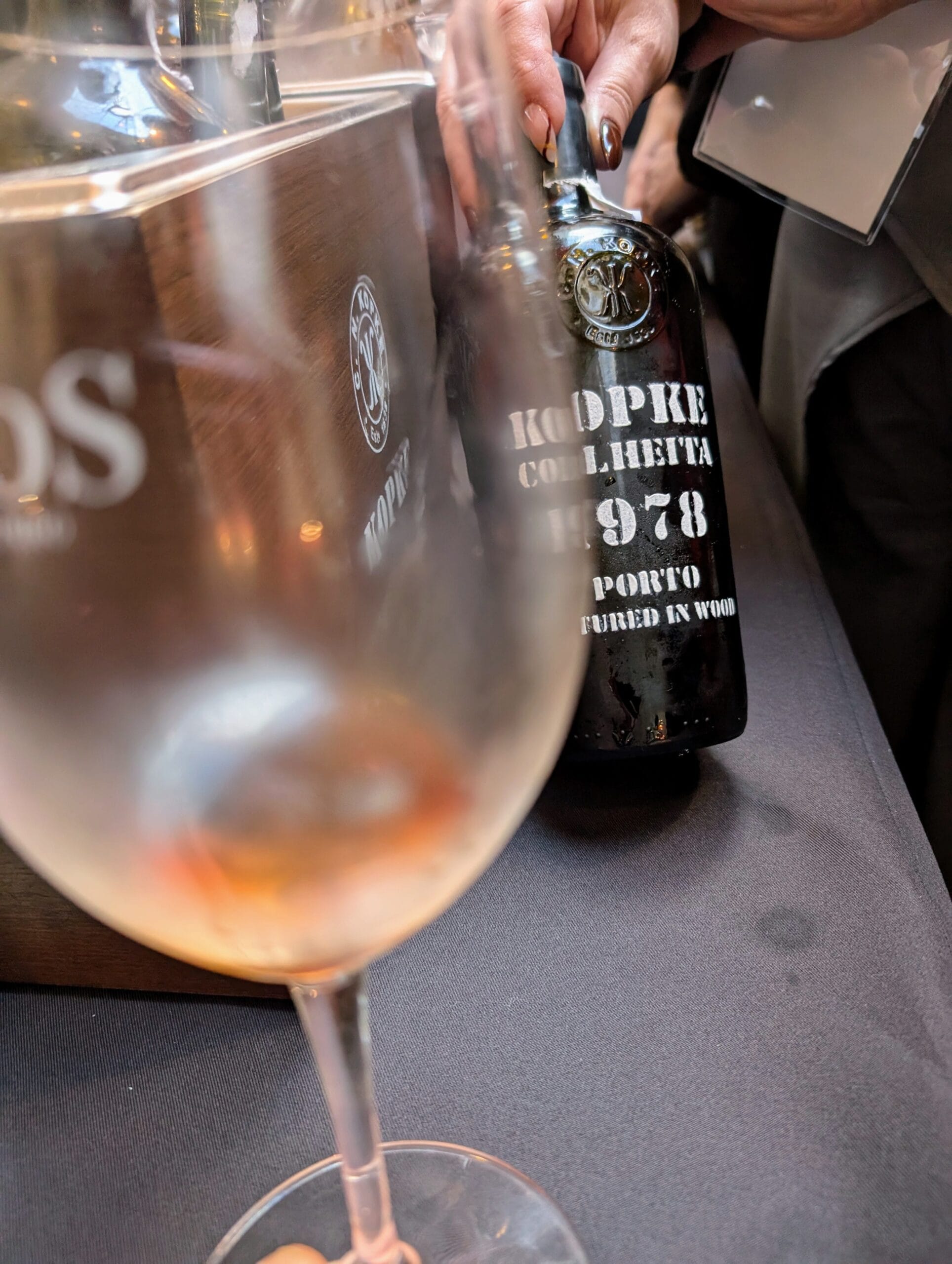
Eating in Porto: The Good, The Cheap, and The Gentrified
On our first trip to Porto back in 2022, we went all in—blowing the budget on an exquisite multi-course gastronomic adventure at Blind, followed by a decadent stay at Torel Palace. We devoured some of the finest seafood of our lives at Ostras & Coisas, making it our mission to taste bacalhau and croquettes at every opportunity.
This time, we took a different approach—keeping it simple, unfussy, and stress-free. Overcomplicating mealtimes when traveling with a six-year-old and a vegetarian is a one-way ticket to chaos, so we embraced the beauty of low-key, quality-driven dining. Less formality, more relaxed bites where great ingredients spoke for themselves.
The Good:
- Lunch at the Rooftop of Porto Cruz — An excellent meal with a stunning view. The service was incredibly attentive, and despite the music being a little too loud, we all enjoyed the experience. Their Porto Tonics at the wine fair were also a highlight—refreshing, well-balanced, and dangerously easy to drink.
- Dona Francesinha — Fantastic service, with a staff that took real care of the little one. The Francesinha is not a light meal by any means, but even the vegetarian mother-in-law loved her sandwich and the rich, indulgent gravy. It’s a dish that demands respect—layer upon layer of meat, cheese, and sauce, a true gut-buster that’s worth every bite.
- Mercado de Matosinhos — A paradise for food lovers, though my vegetarian mother-in-law and my daughter weren’t as thrilled about the fish displays. The market is a celebration of Portugal’s seafood bounty, an aromatic mix of salt, sea, and sizzling grills. We didn’t get a chance to eat at the incredible-looking seafood spots here, as our six-year-old was desperate for a run on the beach. However, we had a pretty solid meal further down the coast at Praia Homem do Leme, proving that sometimes, simplicity wins the day.
The Cheap:
- Porto is still one of the most affordable places to eat well in Europe. Traditional spots are where you get the best value—as long as you’re not vegetarian.
- Casa Guedes — Their roast pork and cheese sandwich? Outrageous. Slow-cooked, juicy pork, dripping with flavor, tucked into crusty bread and slathered with cheese—simple, messy, and perfect.
The Gentrified:
- The WOW Center felt like Porto’s version of Disneyland for tourists. My mother-in-law loved it; I found it overpriced and soulless.
- The sardine and bacalhau stores on Vila Nova de Gaia side are over-the-top, bordering on Las Vegas levels of kitsch.
- The Time Out Market in both Porto and Lisbon? A theme park for wannabe foodies with too much money. High prices, sanitized flavors, and none of the rough charm that makes Portuguese food truly special.
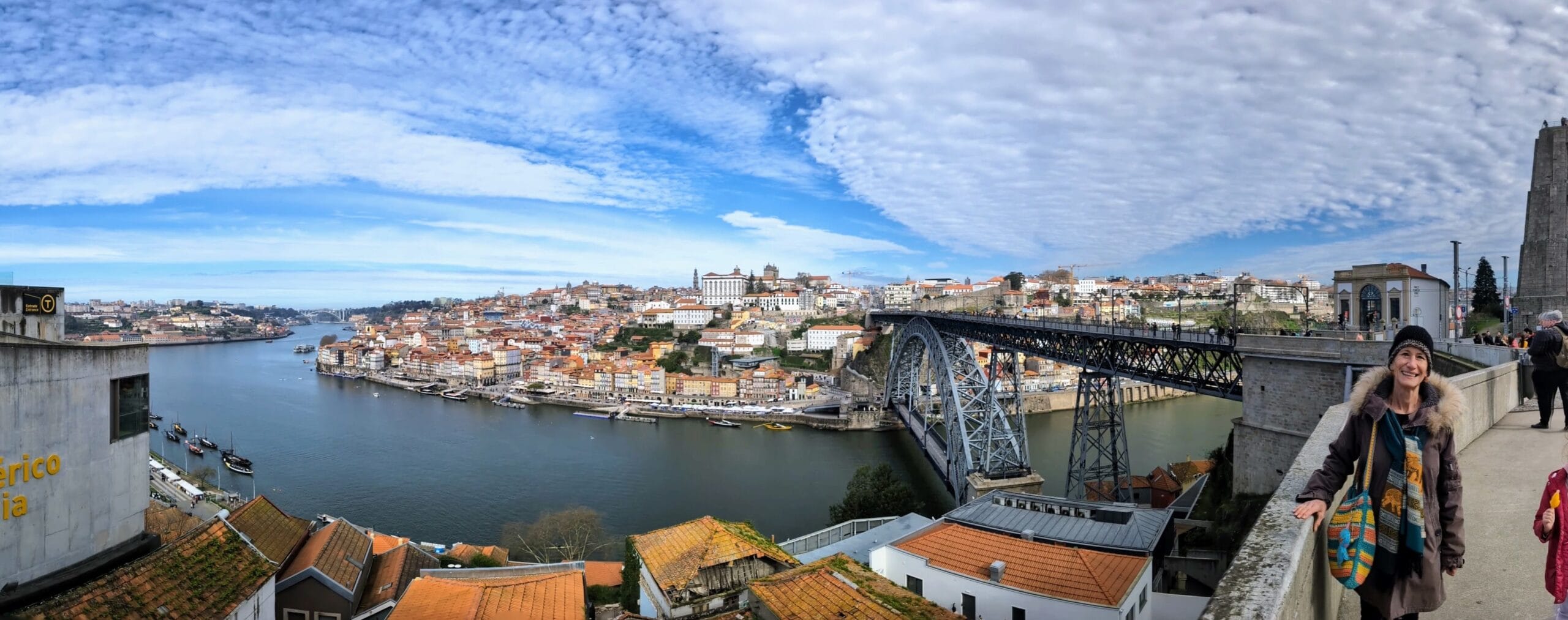
Porto with a Vegetarian and a Six-Year-Old
Let’s be real—traveling with a teetotaling, vegetarian mother-in-law and a six-year-old had me a little on edge. So, like any good chef, I prepped. I poured my anxious energy into meticulous planning, digging deep into the food scene, and mapping out a strategy that ensured everyone got what they needed—without me losing my mind. If you’re in the same boat, I’ve even written a guide on how to plan your next family trip.
To keep things manageable (and budget-friendly), we booked self-catering accommodation and committed to eating at least one meal a day at home. This turned out to be a game-changer. Shopping in Porto’s supermarkets was a joy—fresh produce, fantastic bread, and all the local cheeses and cured meats I could dream of. Not to mention, prices were a solid 40% cheaper than in Paris, making this an easy way to balance indulgent meals out with relaxed, affordable bites at home.
Of course, eating out with our crew meant finding a middle ground:
- Vegetarian options were limited, so we gravitated toward more tourist-friendly spots where plant-based dishes were on offer.
- Our daughter thrived on chips, ice cream, croquettes, and fresh bread with olive oil—the simple joys of childhood dining.
- But the real highlight? The sheer warmth of Porto’s people. Every restaurant welcomed us like family, and our little one was showered with attention and small gifts from friendly market vendors.
Beyond the food, Porto delivered on experiences too. The mother-in-law and the six-year-old loved:
- A Fado show at A Casa do Fado – São João Novo, where the singer took a moment to acknowledge and welcome our daughter, making her beam with pride.
- A tile-painting workshop at Domus Arte, which added a creative touch to our trip and left us with handmade souvenirs.
- A beach trip near Matosinhos, proving that Porto isn’t just about food and wine.
- The funicular and teleférico rides, simple but thrilling for a six-year-old with a love of heights.
Navigating Porto with a diverse group had its challenges, but ultimately, it reinforced what I already knew: good food, good people, and a relaxed approach can make any trip unforgettable.
Foodie Tips for Porto
- Seek out the locals — Don’t be afraid to enter run-down spots with handwritten menus.
- Go for the wine — Porto isn’t just about Port; the Douro Valley offers some of the best wines in Europe.
- Taxis are cheap — But Porto is walkable if you’re up for the hills.
- Souvenirs? Skip the tourist traps and bring home olive oil, pastéis de nata, or a bottle of ginja.
Where to Eat and Drink: My Map of Porto
Here’s my personal Google Map of Porto, loaded with the best spots for food and wine—meticulously researched before the trip and refined by recommendations from locals we met along the way. Follow the map to sip, snack, and savor like a chef exploring the city.
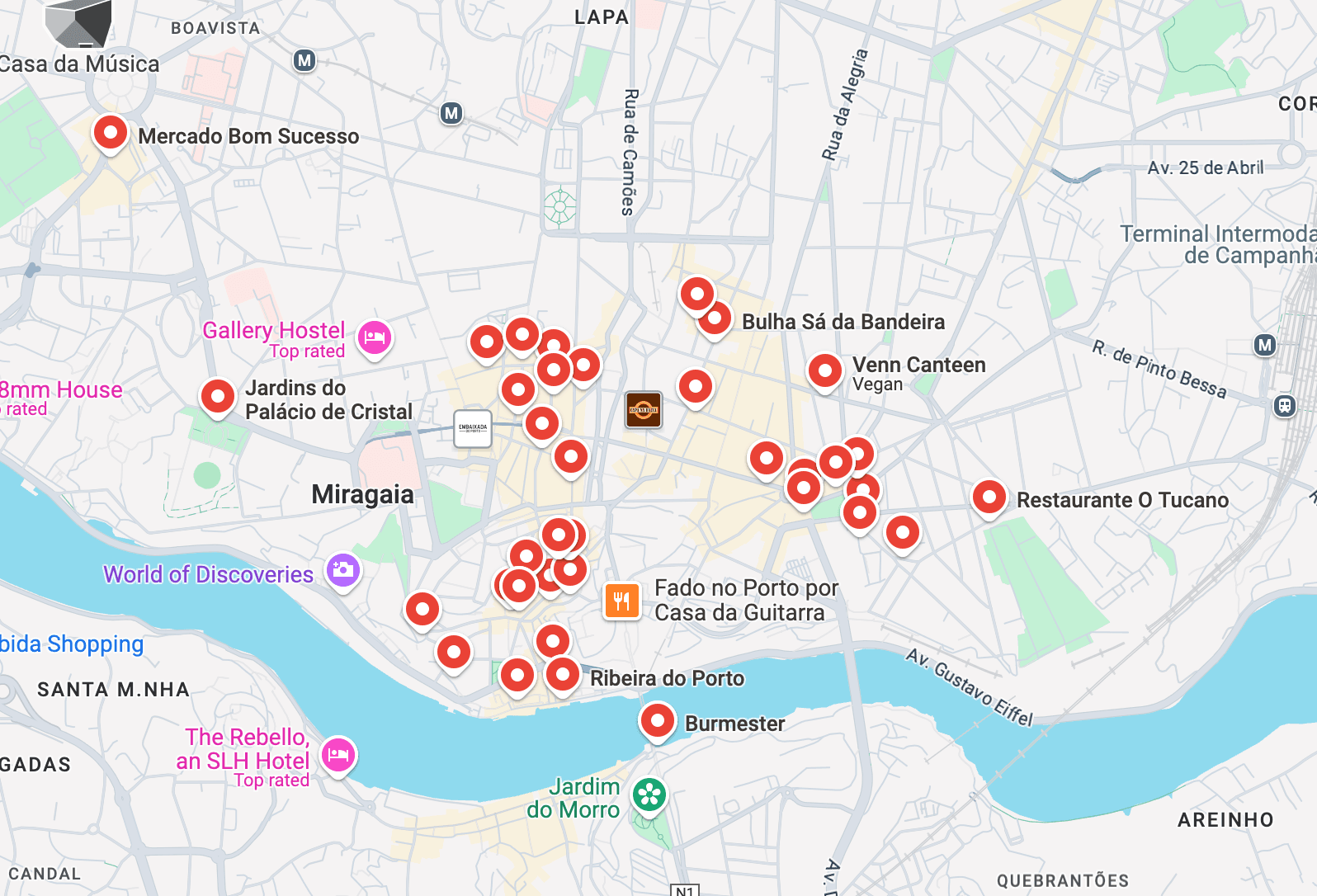
More highlights from my map of Porto
If you can’t make it to Porto during one of its legendary wine fairs, don’t worry—there’s still plenty of magic to be found in a bottle by the seafront. I highly recommend heading to Wine Quay Bar, an intimate spot with an unbeatable view and a wine list that showcases Portugal’s finest. We were floored by a €20 bottle of Quinta de Santa Teresa’s 2022 Singular—a bright, textured white that was the perfect companion to a sunset over the Douro. The service was warm, knowledgeable, and refreshingly unpretentious. This is the kind of place where you’ll want to linger for hours, so in high season, book ahead to claim your spot.
For craft beer lovers, Letraria Porto is a must. Tucked away from the main tourist drags, this hidden gem boasts an inviting beer garden where you can sip local craft brews under the shade of orange trees. The selection rotates regularly, offering everything from crisp lagers to bold, hoppy IPAs. The bar staff? Friendly, passionate, and eager to guide you through Portugal’s thriving craft beer scene. A perfect pit stop when you need a break from all that Port wine.
Caffeine-fueled foodies, take note—7g Coffee Roasters is where you want to start your morning. This stylish coffee shop and roastery serves up some of the best brews in Porto, from silky flat whites to rich, punchy espressos. Despite being packed on the Sunday morning we visited, the staff remained incredibly attentive, even taking the time to spoil our little one with treats. The food? Delicious, well-executed, and the perfect farewell meal to send us off on our last day in Porto. If you’re serious about your coffee, this place is a no-brainer.
Porto’s food and drink scene is a blend of tradition, innovation, and warm hospitality, and these spots are just a taste of what the city has to offer. Follow the map, trust your instincts, and let the flavors of Porto guide you.
Final Thoughts for foodies visiting Porto
Porto remains a fantastic city for food lovers. It’s getting more touristy, sure, but the warmth, the wine, and the food still make it a perfect long weekend destination. It’s also a city in transition, balancing authenticity with the inevitable march of gentrification. Whether that’s a good or bad thing depends on what kind of traveler you are.
Have you been to Porto? Let me know in the comments what you loved (or didn’t) about the food scene!
Love this? Get more real, unfiltered food stories straight to your inbox. No fluff, no spam—just damn good food writing and all for free!

From the bustling streets of Paris to the heat of a professional kitchen, my life has always revolved around food. A Brit who moved to France at 16, I trained as a chef in a Parisian palace kitchen at 18 and have spent decades cooking, eating, and living like the French.
By day, I run kitchens and events, but Eat Like The French is my side hustle—a way to share my passion for French food through writing and food tours. After a detour into tech recruitment, I returned to what I love most: cooking and storytelling—one dish, one tour, and one bite at a time.

